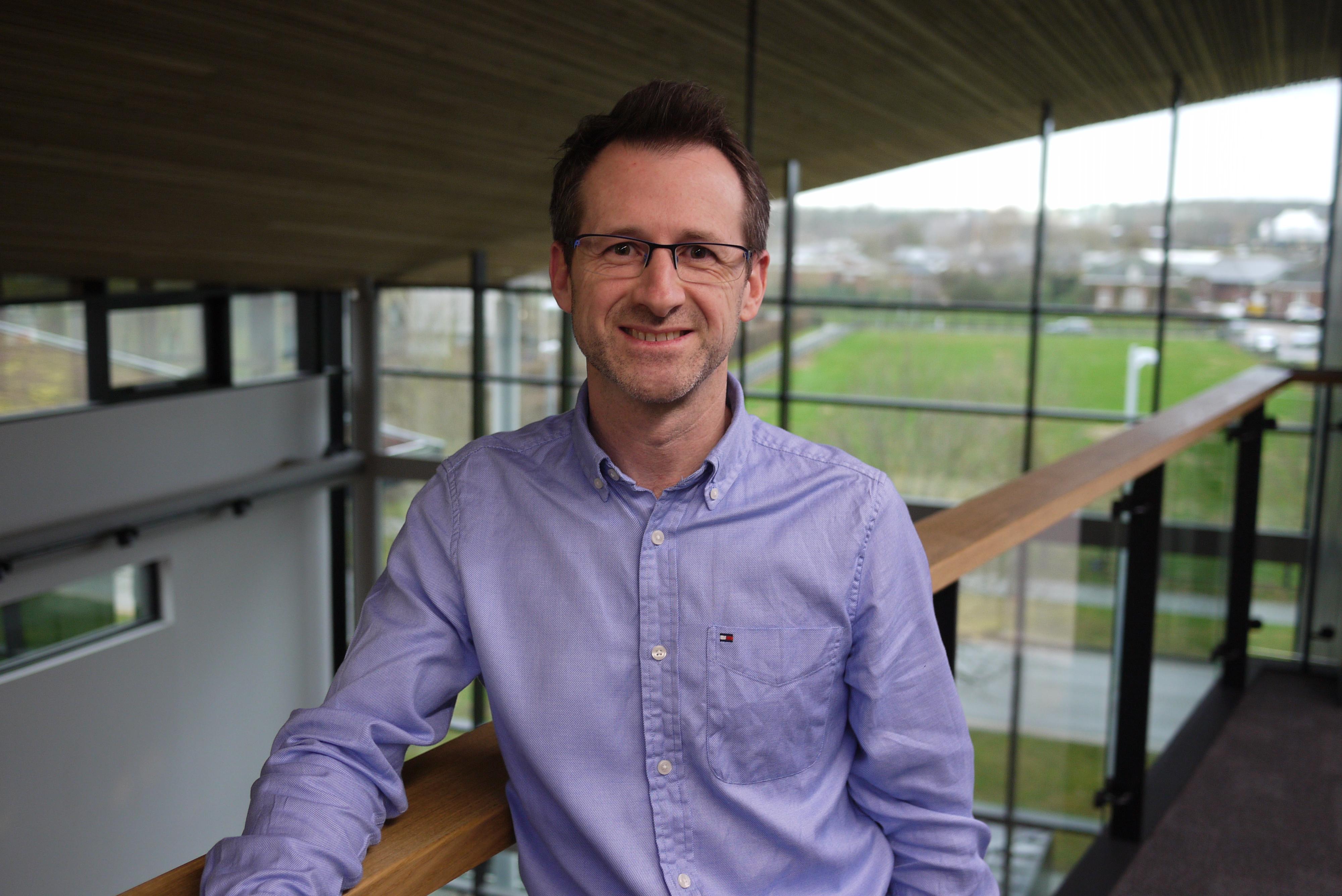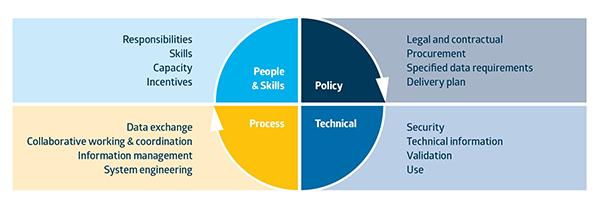
Submitted by Angela Walters on Mon, 26/11/2018 - 13:17
The experience of progressing BIM as a national digitalisation strategy while working with countries globally to secure a common approach to BIM has generated a diverse range of practical understanding. Adam Matthews, lead for CDBB International, reflects on this experience and sets out seven ‘big questions’ for national BIM programmes.
While BIM continues to be key to digitally transforming the UK construction industry to improve its productivity, deliver better outcomes and de-risk projects, it also brings opportunity to generate strategic benefits beyond our own shores. There is great value in developing innovation collectively and the experience of building a common approach to BIM globally, sharing skills and techniques, delivers benefits to all stakeholders and provides an effective way to increase international trade and growth.
Much has been learned in nearly a decade of UK domestic practice that has clearly demonstrated the ability to affect digital transformation through public policy and public procurement. In addition, CDBB’s International programme that reaches across Europe where there are more than 20 countries growing their own national strategies while aligning a common language, has highlighted both opportunity and challenge. The success of the European programme has informed engagement with countries in Latin America, Africa and Asia, and our methodology and ideas and technical support are based not on a single country but on the consensus of many.

We also deliver support to the UK Government’s Prosperity funded Global Infrastructure Programme (GIP) that offers UK infrastructure methodologies for business case development, project preparation and digital construction to partner countries in Latin America, Asia and Africa. We work with government officials and industry stakeholders in partner countries to identify the adaptations required to meet local cultural, contractual and legal conditions and, importantly, to deliver on the desired national outcomes for that country.
When a country embarks on the process of digital transformation the procedure begins with a number of prompting questions to bring focus to the challenges that government and industry face in the national adoption of BIM as a digital strategy. The experience of working both nationally and internationally has led CDBB to identify seven ‘big questions’ to be asked by all countries choosing to engage with a digital strategy that is truly transformative:
1. How do you transform an entire sector?
Construction is an important sector in every economy. Transforming an entire sector is a large-scale change management operation involving both the public sector and industry; and standards bodies and academia, with potential change across public policy, working practices, guidances, internal regulations and ultimately projects. The ‘why, how, who, what and when’ questions must be answered before the process of change can begin.
![]()
There are three distinct levels to transformation – central policy, public sector clients and the private sector. CDBB’s International team’s work is focused at policy level to create public leadership and provide public policy support that drives national change bringing meaningful transformation across both public clients for social and economic infrastructure; such as schools, hospitals, roads and railways (delivery and operation), and the private sector. Capacity must be built gradually in both to succeed.
2. What are your goals, ownership and strategy?
The UK acknowledged the challenges it faced in construction including low productivity, late delivery of projects, and lack of value for public money. This was the starting point of the UK approach that recognised the public client as the sole body that could lead a single approach with the industry.
Why should government care about BIM? Because the way the industry performs is responding to the question asked by government as a client. If a different answer is desired, the question must be changed. Government is uniquely placed to drive transformational change as the industry’s largest client, it has the critical mass and scale to provide support, direction and long-term demand. This level of public ownership and leadership can provide the essential catalyst for industry transformation.

Governments can consult with industry to set out clear goals and a strategy for the introduction of BIM. The UK programme described its goals, strategy and leadership in its 2011 Government Construction Strategy (and 2016-2020). It presented the business case, government leadership and an implementation plan that identified goals and gave industry resource and time to change and meet targets.
3. Are you well coordinated?
Faced with the potential prize that comes with sector digital transformation – improved productivity, better value for money and sustainable efficiencies – what are the outcomes of different parties – government, industry and academia – working separately or together? Working in a siloed way increases the risk of divergence: diverging standards, definitions, contractual terminology and of reinventing the wheel.
The UK and a number of countries respond to this question by identifying a ‘task group’ to act as a central coordination body – and a change agent for the public sector and private sector transformation.
The international methodology highlights four main pillars of phased activity required to reach the identified prize:
i) government policy actions, public procurement and project implementation
ii) industry and academia building the required framework of associated standards and documents;
iii) training and trial projects to include early case studies that measure benefits and reflect a successful change programme;
iv) communication and engagement with communities of practice to win hearts and minds.
4. Do you need a national and international BIM definition?
Why have one definition for BIM when some countries can work with many? Not agreeing on one single definition can mean working with a new definition of BIM for every new project undertaken, wasting time and resource. This project level ‘drag factor’ can offset the productivity savings and erode benefits at a national scale.
Early in its programme, the UK created a common-sense definition of what BIM is in projects, which works at an organisational level and at a national scale across:
- Policy – legal and procurement
- Technical – security in the exchange of information required in contracts
- Process – definition of the collaborative process to deliver an information management mindset for construction
- Skills – build competences and capacity for skilled learning in academia and existing professionals in industry

Taking a national definition approach has provided a common language and a set of concepts for all of the industry, SMEs as well as larger companies; and product manufacturers to asset managers. This has brought clarity to BIM: it’s an area that can be confusing. It has reduced the misunderstanding arising from confusion during tender, procurement and contracting; and in delivering projects when using differing sets of terms and standards.
Having a common definition enables all parties to convene at the starting point of a project, identify how BIM supports the project goals and assign responsibilities among the project team in a seamless way.
The UK recognised the need for an international view alongside the national definition and is working with international standards bodies to create alignment to facilitate common understanding on BIM; and this helps to grow the market by trading more easily globally.
5. How do you gradually develop learning?
Learning is needed throughout a change programme of this scale and challenge. Public clients need to learn, legal and standards development needs to be informed; and the private sector needs to adapt to this ‘digital switchover’.

This is a sizeable challenge and can begin by carefully identifying early projects to secure success. Our international collaboration has reinforced that picking projects where one or two BIM related interventions can be made to demonstrate benefits and build confidence with public clients who will champion the process to other public clients and vouch for savings made. Early successes provide an evidence base on which to progressively build across a diverse range of asset owners, including roads, bridges, environmental, rail, schools, hospitals, housing and judicial. In this way learning can be built over a period of years across a range of different assets to reach all parts of industry and the supply chain.
6. How do you change mindsets?
Changing the way people think and work is no small task. This is not a linear process and requires identifying people across a broad skills base to engage a wide range of communication activities. In the UK a number of digital advocates were identified who could effectively engage with and talk to industry and champion the strategy to create momentum. In other countries such as Chile, where this engagement action has been fantastically successful, we have seen industry engagement as a ‘viral effect’; rapidly spreading across the industry ecosystem. This is an organic process that is important to start early and continue to build throughout the programme.
Up-skilling and changing the mindset of the public client is essential and perhaps the most important to do with care, resource and empathy. The public client is the one setting the procurement question, and potentially using the information delivered from BIM process. Understanding and changing the culture of the public procurer is important and many countries recognise this is a gradual and necessary process.

Building communities of practice is an important tool for accelerating learning and building confidence and competence. This is great for clients and for industry practitioners. This approach has worked well in many countries, for example, in the UK there are now 45 different groups focusing on what BIM means for their community.
7. How do you maintain momentum?
Once the process of transformation has been started momentum must be maintained. In the UK the initial programme was planned as a project that concluded after a stated term. However, the call from industry for a sustained presence was heard, support extended and the response is the Centre for Digital Built Britain that brings together government, industry and academia to collectively sustain the programme nationally, and internationally.
Final thoughts
We have learned a lot from collaborating with other countries and it has been a rich two-way experience. It has helped us to learn that there is limited value for a country to develop its own standards and terms in isolation. As this domestic investment can be easily eroded by international efforts. Conversely, there is real benefit to collaborating to create more opportunities for individual countries to perform better domestically and by creating common understanding, increasing prosperity through international trade. Global collaboration is the goal of our work, and it is increasing at pace.
If you are interested in the international work of CDBB please contact us at international@cdbb.cam.ac.uk
